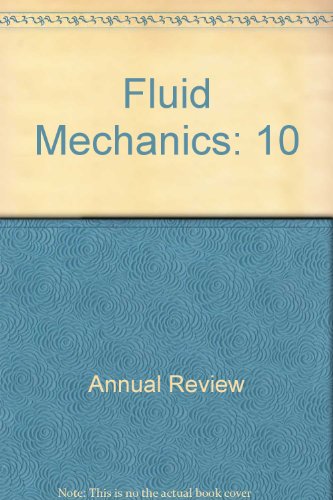Elasto-Inertial Turbulence
IF 30.2
1区 工程技术
Q1 MECHANICS
引用次数: 10
Abstract
The dissolution of minute concentration of polymers in wall-bounded flows is well-known for its unparalleled ability to reduce turbulent friction drag. Another phenomenon, elasto-inertial turbulence (EIT), has been far less studied even though elastic instabilities have already been observed in dilute polymer solutions before the discovery of polymer drag reduction. EIT is a chaotic state driven by polymer dynamics that is observed across many orders of magnitude in Reynolds number. It involves energy transfer from small elastic scales to large flow scales. The investigation of the mechanisms of EIT offers the possibility to better understand other complex phenomena such as elastic turbulence and maximum drag reduction. In this review, we survey recent research efforts that are advancing the understanding of the dynamics of EIT. We highlight the fundamental differences between EIT and Newtonian/inertial turbulence from the perspective of experiments, numerical simulations, instabilities, and coherent structures. Finally, we discuss the possible links between EIT and elastic turbulence and polymer drag reduction, as well as the remaining challenges in unraveling the self-sustaining mechanism of EIT.Elasto-Inertial动荡
低浓度聚合物在有壁流动中的溶解以其无与伦比的减少湍流摩擦阻力的能力而闻名。另一种现象是弹性惯性湍流(EIT),尽管在发现聚合物减阻之前,人们已经在稀聚合物溶液中观察到弹性不稳定性,但对它的研究却少得多。EIT是由聚合物动力学驱动的混沌状态,在雷诺数上观察到许多数量级。它涉及从小弹性尺度到大流动尺度的能量传递。对EIT机制的研究为更好地理解弹性湍流和最大阻力减少等其他复杂现象提供了可能。在这篇综述中,我们调查了最近的研究工作,这些研究工作正在推进对企业创新技术动态的理解。我们从实验、数值模拟、不稳定性和相干结构的角度强调了EIT和牛顿/惯性湍流之间的根本区别。最后,我们讨论了EIT与弹性湍流和聚合物减阻之间的可能联系,以及在揭示EIT自我维持机制方面的剩余挑战。
本文章由计算机程序翻译,如有差异,请以英文原文为准。
求助全文
约1分钟内获得全文
求助全文
来源期刊
CiteScore
54.00
自引率
0.40%
发文量
43
期刊介绍:
The Annual Review of Fluid Mechanics is a longstanding publication dating back to 1969 that explores noteworthy advancements in the field of fluid mechanics. Its comprehensive coverage includes various topics such as the historical and foundational aspects of fluid mechanics, non-newtonian fluids and rheology, both incompressible and compressible fluids, plasma flow, flow stability, multi-phase flows, heat and species transport, fluid flow control, combustion, turbulence, shock waves, and explosions.
Recently, an important development has occurred for this journal. It has transitioned from a gated access model to an open access platform through Annual Reviews' innovative Subscribe to Open program. Consequently, all articles published in the current volume are now freely accessible to the public under a Creative Commons Attribution (CC BY) license.
This new approach not only ensures broader dissemination of research in fluid mechanics but also fosters a more inclusive and collaborative scientific community.

 求助内容:
求助内容: 应助结果提醒方式:
应助结果提醒方式:


